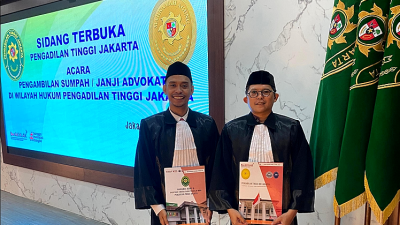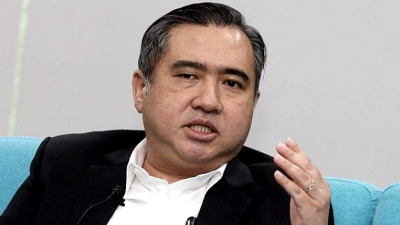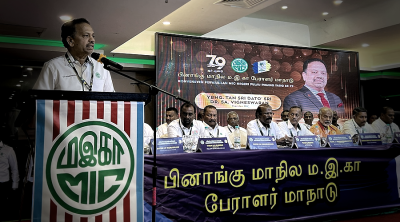As 2022 comes to a close, we are still dealing with the COVID-19 pandemic. People ask about, discuss and hope that the pandemic will finally end in 2023.
To answer the most frequently asked questions, we need a comprehensive analysis and reality check.
First of all, we should remember that the pandemic before COVID-19 that the World Health Organisation declared was the H1N1 pandemic.
On June 11, 2009, then-WHO director-general Margaret Chan announced the beginning of the swine flu pandemic, raising its alert level to phase 6, the highest level.
On Aug. 10, 2010, Chan announced that the H1N1 influenza pandemic was no longer at alert phase 6, and that the world had moved into the post-pandemic period. So, the pandemic before COVID-19 lasted only one year and two months.
Incumbent WHO director-general Tedros Ghebreyesus declared the COVID-19 global pandemic on March 11, 2020. At that time, COVID-19 cases had reached 118,000 globally, with 4,291 deaths. As time passed, both the infection and fatality rates increased exponentially.
As of Dec. 16, almost three years since the COVID-19 pandemic began, SARS-CoV-2, the virus that causes the disease, has infected nearly 648 million people and killed more than 6.64 million people globally.
In Indonesia, the first cases were announced on March 2, 2020. As of Dec. 16, 2022, the country has recorded over 6.7 million cases and 160,335 deaths.
Second, regarding progress in handling the pandemic, the WHO director-general delivered good news on Sept. 14 that the number of weekly infections had plunged to the lowest rate, meaning that the end of the pandemic was in sight. “We have never been in a better position to end the pandemic,” he said.
With this, he clearly warned that the world was “not there yet”.
“A marathon runner does not stop when the finish line comes into view. She runs harder, with all the energy she has left. So must we. We can see the finish line. We’re in a winning position. But now is the worst time to stop running,” he told the media briefing.
Third, one of the challenges in the battle against COVID-19 is the fact that new variants emerge from time to time.
These mutations can come from a pre-existing or newly established animal reservoir or due to a recombination event, during which a patient co-infected with two different variants of SARS-CoV-2 produces new infectious viral particles that shares genetic characteristics with both parent lineages.
The WHO has identified three possible pandemic scenarios that would effectively be a reset, with a completely susceptible global population. Taking these into consideration will define our COVID-19 response and readiness, and therefore improve our resilience when new threats occur.

The first scenario is “base case”, which assumes that the virus continues to evolve, but its severity is significantly reduced over time due to sustained and sufficient immunity against the disease. There will be further decoupling between incidences and severe impacts, leading to progressively less severe outbreaks.
Periodic spikes in transmission may occur as a result of an increasing proportion of susceptible individuals over time if waning immunity is significant, which may require periodic boosting, at least for the most vulnerable populations. A seasonal pattern of transmission peaks in temperate zones may also emerge.
The second scenario is “best case,” which assumes that future variants that emerge are significantly less severe, and therefore protection against COVID-19 is maintained without the need for periodic boosting or significant alterations to current vaccines.
The third scenario is “worst case” and what we do not want to happen. In this scenario, a more virulent and highly transmissible variant emerges against which vaccines are less effective, and/or immunity against COVID-19 wanes rapidly and deaths increase, especially among the most vulnerable groups.
This would require significant alterations to current vaccines and full redeployment and/or broader boosting of all high-priority groups. Should the COVID-19 pandemic end in 2023, we are certainly hoping for the “base case” or even the “best case” scenarios.
After the pandemic ends, people across the globe, including in Indonesia, should really consider at least three things.
First, based on the available evidence and experience from past pandemics, it is likely that SARS-CoV-2 will continue to circulate in the years to come, even after the WHO declares that the pandemic has ended. It can still cause disease and even serious health complications in high-risk groups.
The overall situation is now under control, far better than during the last two years of the pandemic. However, we should carefully attend to patients with long COVID, people who have recovered from the infection but continue to experience health issues.
Second, there are still many questions about COVID-19 and we have clear answers to only some of them. Advancements in science and technology will help us get to know this disease and how to control it better.
Third, continued vigilance is extremely important. Surveillance, vaccination and clinical management will still be necessary during the post-pandemic period. We must also stay alert to emerging diseases and pandemics in the future.
Most recently, Ghebreyesus said he was “hopeful” that the COVID-19 pandemic would no longer be considered a global emergency at some point in 2023. We share this hope and wish that it will come true.
ADVERTISEMENT
ADVERTISEMENT








































